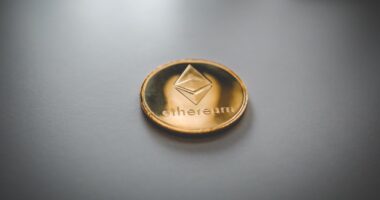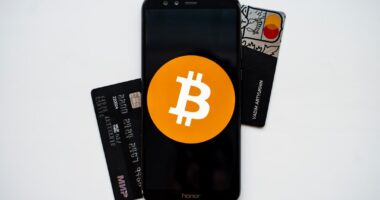Non-fungible tokens (NFTs) are digital assets that represent ownership or authenticity of unique items or content, such as artwork, music, videos, or collectibles, using blockchain technology. Unlike fungible cryptocurrencies like Bitcoin or Ethereum, NFTs are non-interchangeable, with each token possessing unique characteristics. This uniqueness contributes to their value and appeal among collectors and investors.
NFTs operate on blockchain technology, creating a decentralized digital ledger that records ownership and transaction history for each token. This distributed ledger is maintained across a network of computers, ensuring security and resistance to tampering. When an NFT is created, it receives a unique digital signature that cannot be replicated or forged, providing verifiable proof of its authenticity and ownership.
This digital signature is the key factor in establishing the value and desirability of NFTs, enabling the creation of scarce and collectible digital assets.
Key Takeaways
- NFTs are unique digital assets that are stored on a blockchain and cannot be replicated or replaced.
- Creating an NFT involves minting it on a blockchain platform, which involves uploading the digital file and adding metadata.
- Anyone can create NFTs, but you will need a digital wallet, cryptocurrency for transaction fees, and access to a blockchain platform.
- Ethereum is the most commonly used blockchain for creating NFTs, while Bitcoin is also used but to a lesser extent.
- Recent developments in the NFT market include increased interest from artists, musicians, and celebrities, as well as growing concerns about environmental impact.
The Process of Creating an NFT
Selecting the Digital Content
The first step in creating an NFT is to select the digital content that will be tokenized. This can be a piece of artwork, a music track, a video clip, or even a tweet. The possibilities are endless, and the choice of content depends on the creator’s vision and goals.
Preparing the Digital Content
Once the content is selected, it needs to be converted into a digital file format that is compatible with the blockchain platform on which the NFT will be created. This may involve converting the file into a specific image or video format, depending on the requirements of the NFT marketplace or platform.
Creating and Listing the NFT
After the digital content is prepared, the next steps involve choosing a blockchain platform, using a digital wallet to store and manage the NFT, and selecting a marketplace or platform to list and sell the NFT. The most popular platform for creating NFTs is Ethereum, which has a robust infrastructure for creating and trading digital assets. The creator will need to pay for gas fees associated with creating and transferring NFTs on the blockchain, and set a price and any additional terms or conditions for the sale.
Who Can Create NFTs and What You Need to Get Started

Anyone with access to digital content and a basic understanding of blockchain technology can create NFTs. Artists, musicians, filmmakers, writers, and other creators are all getting involved in the NFT market to tokenize their work and reach new audiences. To get started with creating NFTs, you will need access to digital content that you own or have the rights to tokenize.
This could be original artwork, music, videos, or other digital creations that you want to sell as NFTs. In addition to digital content, you will also need a basic understanding of blockchain technology and how to use cryptocurrency wallets and exchanges. This includes understanding how to create and manage digital wallets, how to buy and transfer cryptocurrency to pay for gas fees, and how to navigate NFT marketplaces and platforms.
While this may sound daunting at first, there are many resources and tutorials available online to help beginners get started with creating and selling NFTs.
The Role of Ethereum and Bitcoin in NFT Creation
Ethereum is the leading blockchain platform for creating and trading NFTs, thanks to its robust infrastructure for smart contracts and decentralized applications (dApps). Ethereum’s ERC-721 standard is specifically designed for creating non-fungible tokens, providing a framework for developers to create unique digital assets with built-in ownership and transferability features. This has made Ethereum the go-to platform for artists, creators, and developers looking to tokenize their work and participate in the growing NFT market.
While Ethereum is the primary platform for creating NFTs, Bitcoin also plays a role in the NFT market as a store of value and means of exchange. Many NFT marketplaces and platforms accept Bitcoin as a form of payment for purchasing NFTs, allowing collectors and investors to use their Bitcoin holdings to buy digital assets. Additionally, some artists and creators have experimented with creating NFTs that are tied to Bitcoin’s blockchain, leveraging its security and network effects to add value and scarcity to their digital creations.
Recent News and Developments in the NFT Market
The NFT market has experienced explosive growth in recent years, with record-breaking sales and high-profile endorsements driving mainstream attention to the space. From digital art auctions fetching millions of dollars to iconic memes being sold as NFTs, the market has captured the imagination of collectors, investors, and creators alike. Major brands and celebrities have also entered the NFT space, launching their own digital collections and collaborations with artists to create exclusive NFTs.
However, the rapid growth of the NFT market has also raised concerns about sustainability and environmental impact, as the energy consumption of blockchain networks like Ethereum has come under scrutiny. This has led to discussions about alternative solutions for creating and trading NFTs that are more energy-efficient and environmentally friendly. Additionally, there have been debates about copyright infringement and intellectual property rights in the NFT space, as creators seek to protect their work from unauthorized tokenization and resale.
Legal and Copyright Considerations for NFT Creation

Ensuring Rights to Tokenize and Sell Digital Content
When creating and selling NFTs, it is essential for creators to ensure they have the necessary rights to tokenize and sell their digital content. This includes original artwork, music, videos, or other forms of creative work. Creators may need to obtain permission from copyright holders or licensing agencies, especially if the content includes third-party intellectual property or recognizable trademarks.
Setting Terms and Conditions for NFT Sales
Creators should also consider including terms and conditions for the sale of their NFTs. This may include limitations on commercial use or reproduction rights for the buyer. By doing so, creators can protect their rights and prevent their work from being exploited or misrepresented after it has been sold as an NFT.
Maintaining Records of NFT Transactions and Ownership
It is crucial for creators to keep accurate records of their transactions and ownership history for their NFTs. This documentation can serve as evidence in case of disputes or legal challenges related to copyright infringement or ownership claims. By maintaining a clear record of ownership, creators can protect their rights and interests in their digital content.
Tips for Success in Creating and Selling NFTs
For creators looking to succeed in the competitive NFT market, there are several tips to keep in mind when creating and selling NFTs. First, it’s important to build a strong online presence and engage with your audience through social media, websites, and other digital channels. This can help you build a following of fans and supporters who are interested in your work and may be potential buyers of your NFTs.
Secondly, it’s essential to do thorough research on NFT marketplaces and platforms before listing your work for sale. Look for platforms that have a strong track record of successful sales and positive user feedback, as well as low fees and user-friendly interfaces. Additionally, consider collaborating with other artists or creators to cross-promote each other’s work and reach new audiences.
Finally, don’t be afraid to experiment with different formats and types of content when creating NFTs. The market is still evolving, and there are opportunities to innovate with new types of digital assets that may appeal to collectors and investors. By staying informed about trends in the NFT space and being open to new ideas, creators can position themselves for success in this exciting and dynamic market.
FAQs
What is an NFT?
An NFT, or non-fungible token, is a digital asset that represents ownership or proof of authenticity of a unique item or piece of content, such as digital art, videos, music, or other digital files.
Can anyone make an NFT?
Yes, anyone can create an NFT as long as they have the digital content they want to tokenize and access to a blockchain platform that supports NFT creation.
Do I need to be an artist to create an NFT?
No, you do not need to be an artist to create an NFT. Anyone with digital content, such as photographs, videos, or other digital files, can create an NFT.
What platforms can I use to create an NFT?
There are several blockchain platforms that support NFT creation, including Ethereum, Binance Smart Chain, Flow, and others. Each platform has its own requirements and processes for creating and selling NFTs.
Do I need to pay to create an NFT?
Yes, there are costs associated with creating an NFT, including gas fees for transactions on the blockchain and platform fees for using NFT marketplaces. The costs can vary depending on the platform and the size of the digital file being tokenized.
Can I make an NFT of someone else’s work?
Creating an NFT of someone else’s work without permission is a violation of copyright law and intellectual property rights. It is important to ensure that you have the legal right to tokenize and sell the digital content as an NFT.





